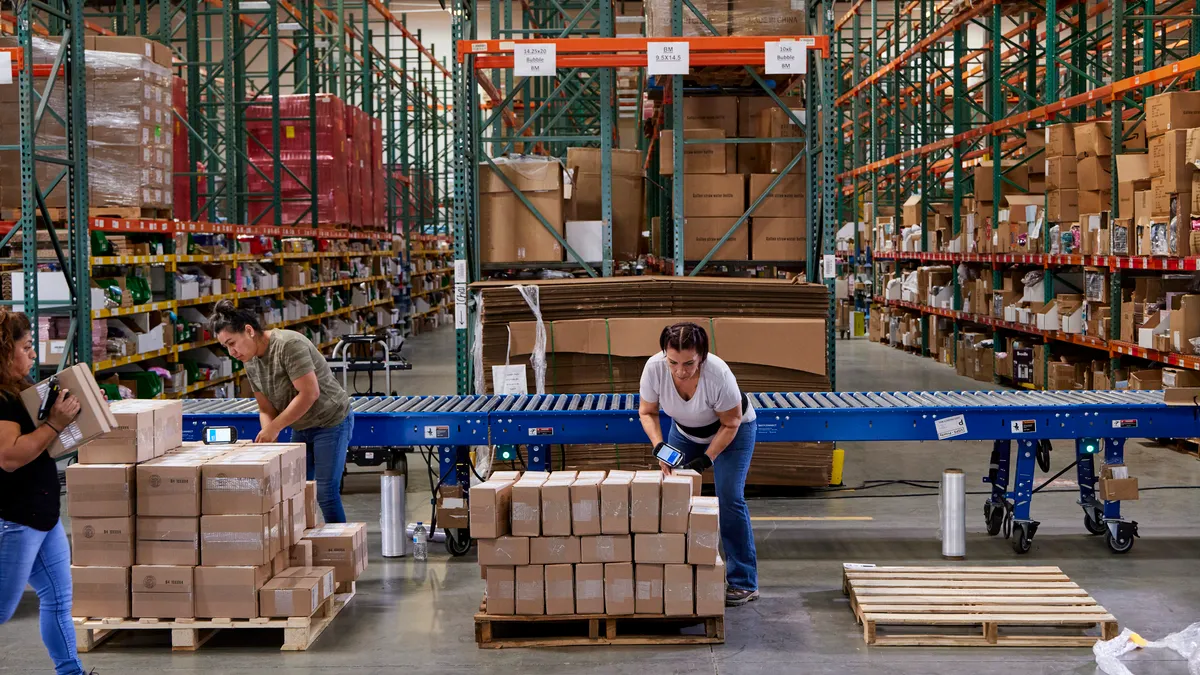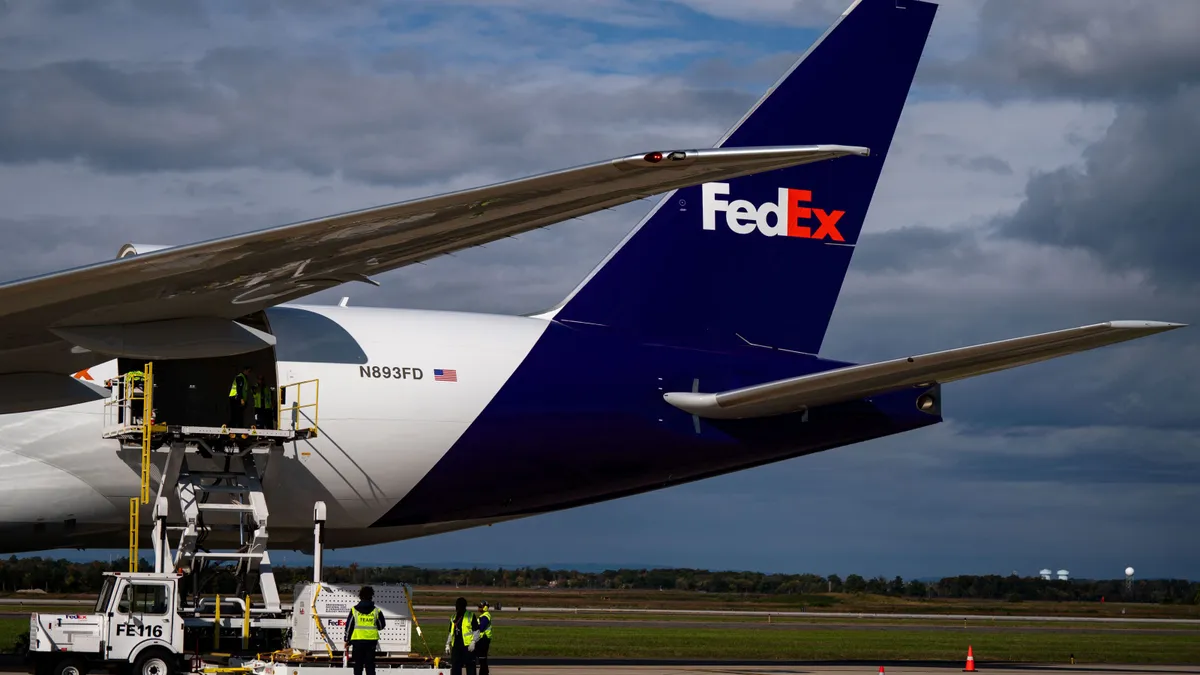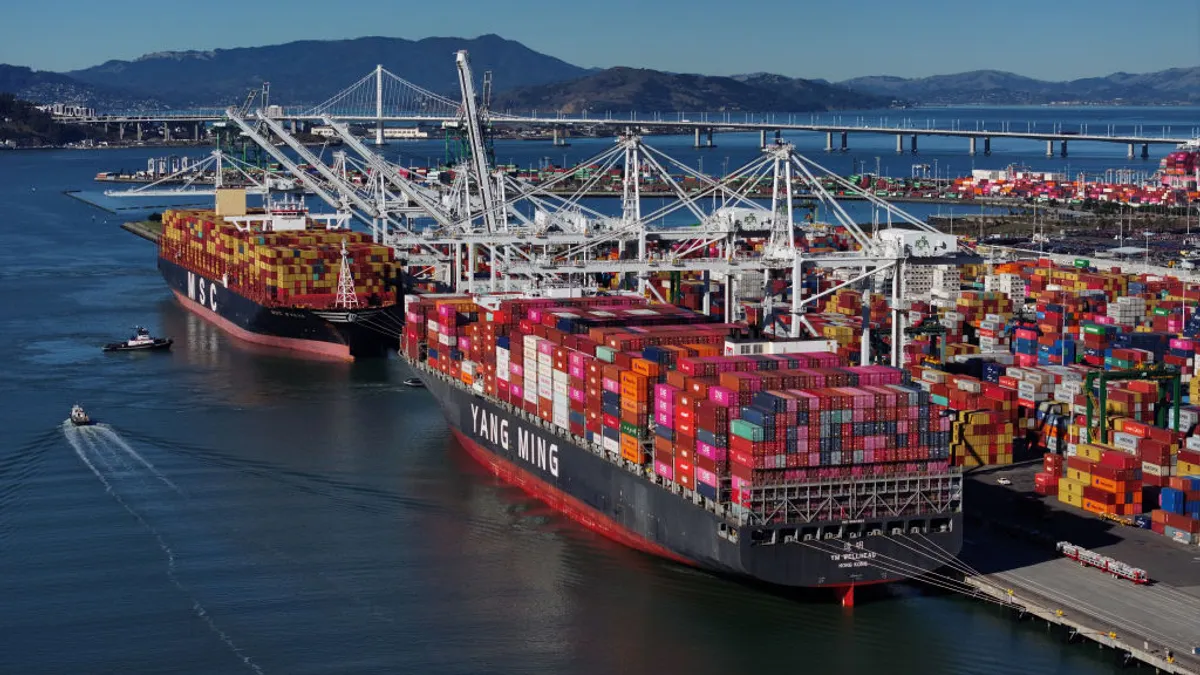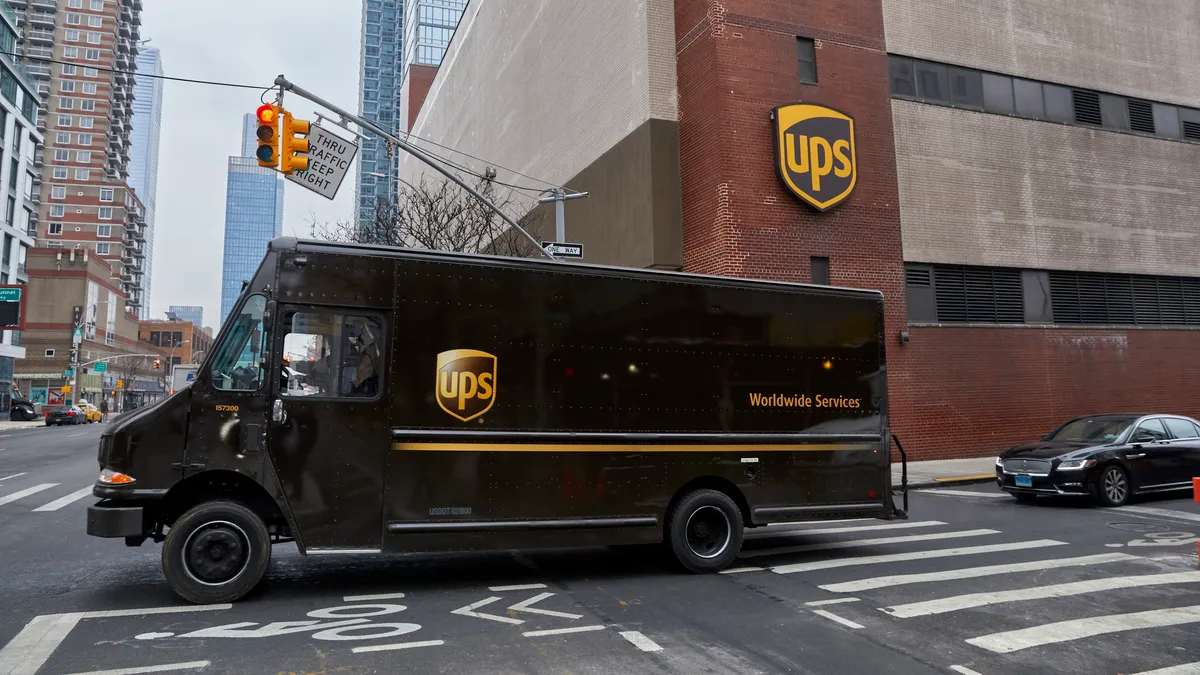Shopify is strengthening its logistics capabilities as it looks to counteract a slowdown in demand for the goods that flow through its fulfillment network.
Shopify's latest strategic bet centers around "the vertical integration of logistics," CEO Tobias Lütke said on a Q2 earnings call last week. The e-commerce platform has made a series of deals since launching its fulfillment network to ease the logistics burden on its sellers.
The fulfillment-focused agreements are happening as Shopify looks to grab a larger share of the e-commerce pie from competitors like Amazon, especially as consumer demand softens. Shopify saw a net loss of $1.2 billion in Q2 after betting that e-commerce spending would leap ahead of physical retail for the long haul.
"We are keenly aware of what's happening around us," CFO Amy Shapero said. "We anticipate that inflation and the continued softness in consumer spending on goods will persist through the remainder of the year."
Shopify ramps up logistics investments
When Shopify launched its fulfillment network in 2019, the company may have thought it could enter the logistics space with a capital-light model, said Tom Forte, managing director and senior research analyst at D.A. Davidson, in an interview.
"More recently, I think they're realizing they need to spend more capital to have a more robust logistics effort," Forte said.
The e-commerce company has been spent big lately to accelerate efforts to simplify distribution. Shopify spent $2.1 billion to acquire Deliverr last month, which will give the e-commerce platform a network of warehouse, carrier and last mile partners to fulfill orders. Deliverr’s asset-light network provides "elastic warehouse capacity" that complements Shopify's existing large warehouse hubs, per a news release.
Through the deal, Deliverr will be able to address Shopify's "vast majority" of gross merchandise volume, the dollar value of orders through Shopify's platform, in North America, Shapero said. Hubs will unpack, scan and inspect inventory using software and machine learning before comparing the inventory against metadata in Shopify's back office. Based on expected buyer demand, Shopify can then route the goods to merchants' distribution channels or forward-position inventory into direct-to-consumer fulfillment centers, President Harley Finkelstein said on the call.
A separate acquisition is also helping Shopify expand its two-day delivery ambitions. The company has completed its rollout of a warehouse management system using fulfillment software from 6 River Systems, which it acquired in 2019. Now, 100% of Shopify Fulfillment Network orders are processed using the software.
"Orders with predicted delivery of 2 days or less have now increased from less than 2% prior to software updates to over 70% after the updates, and we are just getting started," Finkelstein said of Shopify's Q2 performance with the rollout completed.
The combination of Deliverr's software and 6 River Systems' technology allows Shopify to "forward-position merchants' inventory to support timely fulfillment with a minimal inventory commitment," Finkelstein added. It could also help it grab a larger share of the e-commerce pie from competitors like Amazon.
Shopify's supply chain milestones grow in 2022
-
June 2019
-
August 2019
-
September 2019
Shopify announces it will acquire robotics startup 6 River Systems for $450 million
-
February 2022
Flexport says Shopify has made a strategic investment in the logistics platform
-
May 2022
-
May 2022
Shopify launches a pilot program with Flexport to ease merchants' inbound logistics challenges
While the scale of Amazon's fulfillment network is unmatched, Shopify can distinguish itself from competitors by leveraging their technology to anticipate demand and reduce the distance traveled for products, Forte said. This could include catering local inventories to local tastes, like shoes appropriate for a specific region's climate.
"To the extent that Shopify can either take advantage of 6 River Systems or take advantage of its overall product and software to improve that capability, that might be an area of differentiation," Forte said.
Program with Flexport targets faster ocean logistics
In its push to simplify merchant fulfillment, Shopify has also turned to a company it’s invested in.
Inbound logistics can involve upwards of 10 vendors, making it difficult for small- and medium-sized businesses to manage, Finkelstein said. To ease that challenge, the company launched a pilot program with Flexport to help merchants move inbound freight easily and cost effectively.
The Flexport Flow Direct pilot program started in May, Shopify Communications Manager Jackie Warren said in an email. Beyond Shopify, Flow Direct also taps into the 3PL fulfillment networks of ShipBob, ShipHero and Flowspace.
The service provides weekly sailings from China directly to fulfillment centers in the U.S. It targets 20- to 30-day transit times from origin port to fulfillment center and can ship items at the pallet level instead of the container level.
Early pilot runs show Shopify Fulfillment Network merchants can expect up to 50% faster service from origin ports, along with a reduced cost per pallet, Finkelstein said. Once inventory arrives at the destination port, Deliverr and 6 River Systems' capabilities are leveraged in the distribution and delivery phases. Shopify is betting on the combination to improve the experiences of merchants and end consumers — lifting a slumping e-commerce sector in the process.
"We are really excited about the evolution that's underway in fulfillment," Finkelstein said. "When merchants and brands can provide accurate delivery timing that's guaranteed, consumers gain greater confidence in independent businesses, and that is good for commerce overall."
Editor's note: This story was first published in our Logistics Weekly newsletter. Sign up here.






















